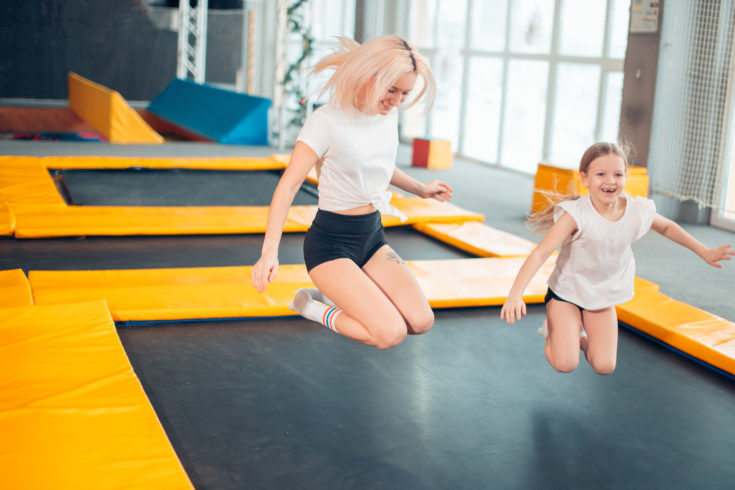Disclosure: This post may contain affiliate links, meaning we get a commission if you decide to make a purchase through our links, at no cost to you. Please read our disclosure for more info.
Childhood obesity is a serious problem in the United States with about 12.7 million children and adolescents being affected, according to the Centers for Disease Control and Prevention. Between the unhealthy eating habits and lack of physical activity, childhood obesity is something that can you can control. Getting your kids up off the couch and participating in physical activity can make a huge difference. One great way to get them up and moving is with a trampoline. Not only do they get your heart rate pumping and your muscles moving, but they’re a lot more fun than running a mile. Before, you run out to the store to purchase a trampoline, here are five safety features that are a must.
In This Post:
1. Enclosures
Enclosures are a must for safe indoor trampolines for kids. Having a net that surrounds the jumping area provide a bit of extra protection by eliminating any opportunity your kid has of falling off the trampoline onto the hard ground below. Safety enclosures have been proven to help increase the chances that your kid will have a safe experience. Because no precautions are foolproof, it’s essential for your kids to avoid purposely jumping into the enclosure. Misusing them in this way can result in the enclosure ripping, and defeating the purpose of the enclosure.
2. Ladders
When considering your trampoline purchase, you want to look for trampolines that have a removable ladder. Having a removable ladder prevents children from using the trampoline without supervision. It is always important that you remove the ladder from the area when your children are finished, so they aren’t tempted to jump on the trampoline unsupervised.
3. Pads
Pads are designed to cover the trampoline’s springs, bars, and hooks to provide better protection while on the trampoline. They make trampolines much safer by providing extra protection against injury. The pads are supposed to protect users from hitting their head or other body parts on the hard metal surfaces. Dr. Marc Robinoff, a professor at the Metropolitan State University of Denver, suggests purchasing trampolines that don’t have a metal frame to increase safety even more.
4. Location
The best way to keep your children safe is by locating your trampoline on an open, flat, and soft surface. Your kids are at a higher risk of being unexpectedly thrown and incurring injuries if the trampoline is located on an uneven surface, that causes it to be tilted. Another thing that you want to avoid is placing the trampoline underneath overhead power lines, tree branches, and other objects that may hit your children as they play. You also never want to put a trampoline on concrete or hard surfaces.

